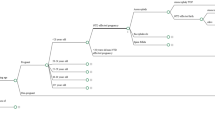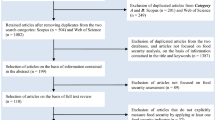Abstract
Objective The SMILING (Sustainable Micronutrient Interventions to Control Deficiencies and Improve Nutritional Status and General Health in Asia) project aimed at creating awareness and improving policies around micronutrient deficiencies in five Southeast Asian countries (Vietnam, Laos, Thailand, Cambodia and Indonesia). Results The project showed large gaps in recent data on micronutrient status in most of the five countries. By updating existing, or creating national food composition tables, the SMILING project enabled analyses of food consumption in women of reproductive age and young children. Linear programming showed a high risk for multiple micronutrient deficiencies in these groups, and especially in pregnant women. Most programs to improve micronutrient status target iodine, iron and vitamin A deficiency. However, the high prevalence of zinc, vitamin D, thiamine and folate deficiency in the region warrant interventions too. For certain micronutrients (zinc, iron, calcium), dietary changes alone appeared not enough to fulfill requirements. Food fortification was identified to be a sustainable, long-term solution to improve micronutrient intake. Multiple criteria mapping by stakeholders in each country resulted in a list of country-specific priority interventions. Surprisingly, food fortification was ranked low, due to concerns on quality control and organoleptic changes of the fortified food. More advocacy is needed for new, innovative interventions such as delayed cord clamping. Conclusions for practice The SMILING project recommends regular surveys to monitor micronutrient status of population, to measure impact of interventions and to guide nutrition policies.
Similar content being viewed by others
References
Berger, J., Blanchard, G., Ponce, M. C., Chamnan, C., Chea, M., et al. (2013). The SMILING project: A North-South-South collaborative action to prevent micronutrient deficiencies in women and young children in Southeast Asia. Food and Nutrition Bulletin, 34, S133–S139.
Campos Ponce, M., Polman, K., Roos, N., Wieringa, F. T., Berger, J., & Doak, C. M. (2018). What approaches are most effective at addressing micronutrient deficiency in children 0–5 years? A review of systematic reviews. Maternal and Child Health Journal. https://doi.org/10.1007/s10995-018-2527-9.
Cavalli-Sforza, T., Berger, J., Smitasiri, S., & Viteri, F. (2005). Weekly iron-folic acid supplementation of women of reproductive age: impact overview, lessons learned, expansion plans, and contributions toward achievement of the millennium development goals. Nutrition Reviews, 63, S152–S158.
Copenhagen Consensus Centre. (2012). How to spend $75 billion to make the world a better place. Copenhagen: Copenhagen Consensus Centre.
Development Initiatives. (2017). Global nutrition report 2017: Nourishing the SDGs, Bristol, UK.
Dijkhuizen, M. A., Greffeille, V., Roos, N., Berger, J., & Wieringa, F. T. (2018). Interventions to improve micronutrient status of women of reproductive age in Southeast Asia: A narrative review on what works, what might work, and what doesn’t work. Maternal and Child Health Journal. https://doi.org/10.1007/s10995-018-2637-4.
Ferguson, E. L., Watson, L., Berger, J., Chea, M., Chittchang, U., et al. (2018). Realistic food-based approaches alone may not ensure dietary adequacy for women and young children in South-east Asia. Maternal and Child Health Journal. https://doi.org/10.1007/s10995-018-2638-3.
Hulshof, P., Doets, E., Seyha, S., Bunthang, T., Vonglokham, M., et al. (2018). Food composition tables in Southeast Asia: The contribution of the SMILING project. Maternal and Child Health Journal. https://doi.org/10.1007/s10995-018-2528-8.
MI/UNICEF. (2004). Vitamin & mineral deficiency. A global damage assessment report. Ottawa: Micronutrient Initiative. http://www.micronutrient.org/CMFiles/PubLib/Report-67-VMD-A-Global-Damage-Assessment-Report1KSB-3242008-9634.pdf.
Roos, N., Ponce, M. C., Doak, C. M., Dijkhuizen, M., Polman, K., et al. (2018). Micronutrient status of populations and preventive nutrition interventions in South East Asia. Maternal and Child Health Journal. https://doi.org/10.1007/s10995-018-2639-2.
Ruel, M. T., Alderman, H., & Maternal, Child Nutrition Study, G. (2013). Nutrition-sensitive interventions and programmes: how can they help to accelerate progress in improving maternal and child nutrition? Lancet, 382, 536–551.
Victora, C. G., Adair, L., Fall, C., Hallal, P. C., Martorell, R., et al. (2008). Maternal and child undernutrition: consequences for adult health and human capital. Lancet, 371, 340–357.
Viteri, F. E., & Berger, J. (2005). Importance of pre-pregnancy and pregnancy iron status: Can long-term weekly preventive iron and folic acid supplementation achieve desirable and safe status? Nutrition Reviews, 63, S65–S76.
Wieringa, F. T., Dahl, M., Chamnan, C., Poirot, E., Kuong, K., et al. (2016). The high prevalence of anemia in Cambodian children and women cannot be satisfactorily explained by nutritional deficiencies or hemoglobin disorders. Nutrients 8, 348.
WorldBank. (1993). World development report: investing in health. Oxford: World Bank, Oxford University Press.
Funding
The SMILING project was funded by the European Commission in the 7th Framework Programme for Research and Technological Development (GA 2896 16).
Author information
Authors and Affiliations
Corresponding author
Ethics declarations
Conflict of interest
The authors declare that they have no conflict of interest.
Additional information
Publisher’s Note
Springer Nature remains neutral with regard to jurisdictional claims in published maps and institutional affiliations.
Rights and permissions
About this article
Cite this article
Berger, J., Roos, N., Greffeuille, V. et al. Driving Policy Change to Improve Micronutrient Status in Women of Reproductive Age and Children in Southeast Asia: The SMILING Project. Matern Child Health J 23 (Suppl 1), 79–85 (2019). https://doi.org/10.1007/s10995-018-02730-z
Published:
Issue Date:
DOI: https://doi.org/10.1007/s10995-018-02730-z




